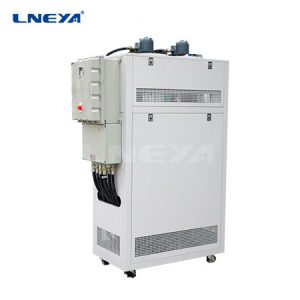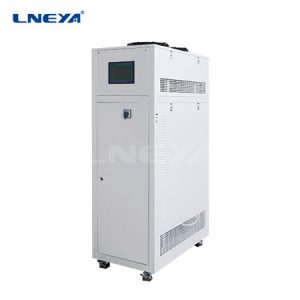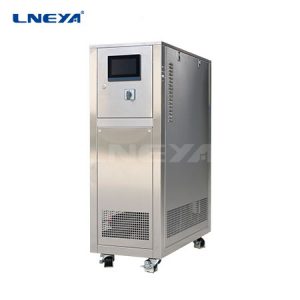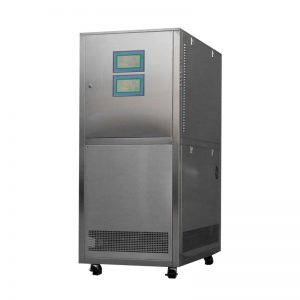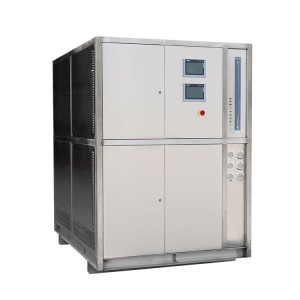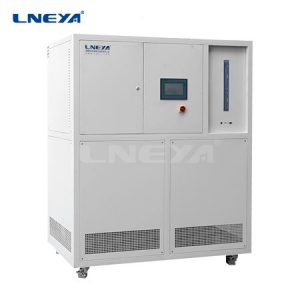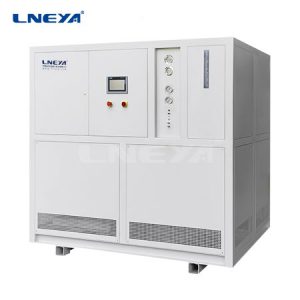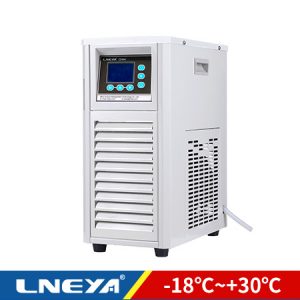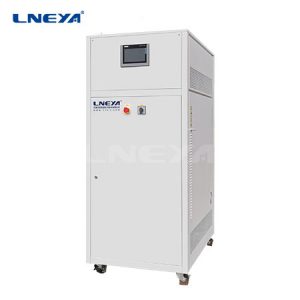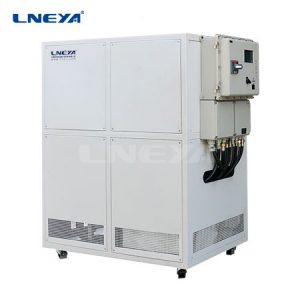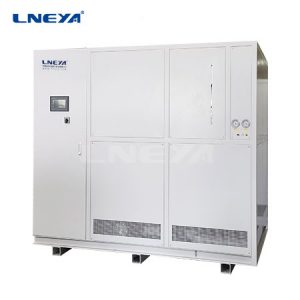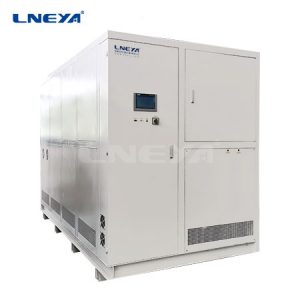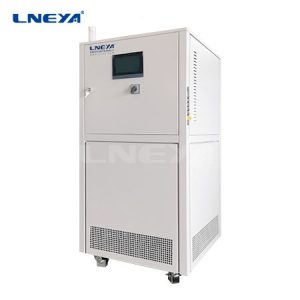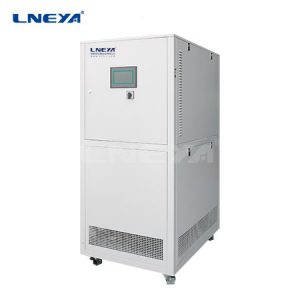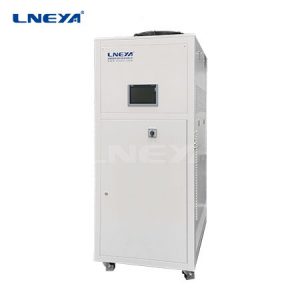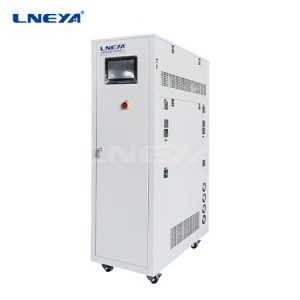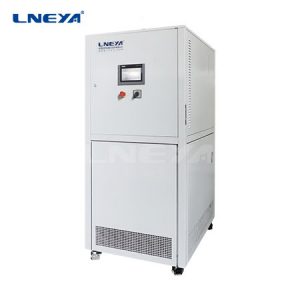How does the Industrial Chiller Exhaust?
In the daily operation of industrial chillers, it is very easy for air to enter the refrigeration unit, because the ultra-low temperature in the refrigeration unit will not condense the air into liquid, but will affect the heat dissipation of the cooler, causing the cooling pressure to rise. As a result, the industrial chiller cannot perform normal operation. Therefore, the air in the industrial chiller must be exhausted in order to maintain the normal operation of the industrial chiller.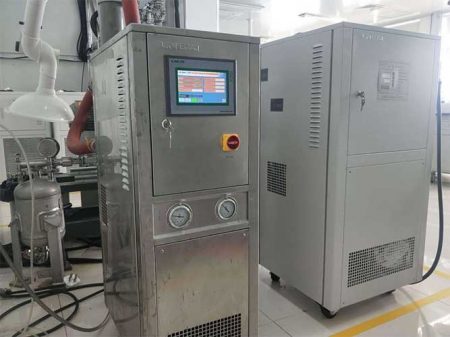
First, the industrial chiller deflation operation process of the air-conditioning Freon system:
1. Turn off the outlet valve of the liquid receiver or the outlet valve of the cooler;
2. Start the refrigeration compressor, and return the refrigerant in the bottom pressure section to the cooler or liquid receiver;
3. After the gas pressure of the bottom pressure system reaches a stable vacuum pump state, shut down the machine;
4. Loosen the side buried hole screw plug of the exhaust pipe cut-off valve, and turn it up and down twice. The automatic exhaust valve stem makes the valve into a three-way shape, allowing high-pressure gas to escape from the side buried hole. Block the exhausted cyclone with your hands. When you feel cold air and oil stains in your hands, it means that the air has been basically exhausted. Tighten the screw plug, rotate the automatic exhaust valve stem forward, and close the side buried hole.
5. It must be noted that the deflation time should not be too long each time, and it can be carried out 2 to 3 times in order to avoid the consumption of refrigerant. If the top of the cooler or reservoir is equipped with a reserved shut-off valve, the air can also be released immediately from the gate valve.
Second, the industrial chiller deflation operation process of the ammonia refrigeration unit:
1. When using the air separator to release air, place the air return valve of the air separator on and off so that the gas pressure of the air separator reaches the breathing pressure, and the other valves should be closed.
2. Moderately open the mixed gas bypass valve so that the mixed gas in the industrial chiller refrigerating unit enters the air separator.
3. Slightly open the liquid supply valve, so that the ammonia liquid throttle valve enters the air separator for vaporization and endothermic reaction, and the mixed gas is refrigerated.
4. Insert one end of the vulcanized rubber hose used to connect the outlet of the air release valve into the water of the water container. When the ammonia in the mixed gas is refrigerated into ammonia liquid, frost will bloom at the bottom of the air separator. At this time, the air valve can be slightly opened to the outside to discharge the air through the water container. If the bubbles are round and have no volume change during the process of rising in the water, and the water is not turbid and the temperature does not rise, then the air is released. At this time, the opening degree of the air release valve should be adjusted appropriately.
5. The ammonia in the mixed gas is gradually refrigerated into liquid ammonia and stored at the bottom. The height of the liquid level gauge can be seen from the frosting state of the casing. When the liquid level gauge reaches 12, close the liquid supply throttle valve and open the liquid intake throttle valve. Make the ammonia liquid in the bottom layer flow back to the air separator to refrigerate the mixed gas. When the bottom frost layer is about to melt, turn off the liquid intake throttle valve and open the liquid supply throttle valve.
6. When stopping the air release, first close the air release valve to prevent the release of nitrogen dioxide, and then close the liquid supply throttle valve and the mixed gas bypass valve. In order to prevent the pressure in the air release device from rising, the return valve cannot be closed.
Temperature Control Range: -45°C ~ +250°C 7 Inch Color Touch Screen With 2pcs of LED Display Controller Contact us now to get the latest d...
Temperature Control Range: -25°C ~ +200°C 7 Inch Color Touch Screen With 2pcs of LED Display Controller Contact us now to get the latest d...
Temperature Control Range: -40°C ~ +200 °C Temperature Control Accuracy: ±0.5 °C 7-Inch,10 Inch color FTF Touch Screen Display Note: Both Air Coo...
Temperature Control Range: -10℃ ~ +150℃ (optional: -150℃ ~ +350℃) Temperature Control Accuracy: ±0.5 °C Contact us now to get the latest d...
Temperature Control Range: -25℃ ~ +200℃ (optional: -150℃ ~ +350℃) Temperature Control Accuracy: ±0.5 °C Contact us now to get the latest d...
Temperature Control Range: -25℃ ~ +300℃ (optional: -150℃ ~ +350℃) Temperature Control Accuracy: ±0.5 °C Contact us now to get the latest d...
Temperature Control Range: -45℃ ~ +250℃ (optional: -150℃ ~ +350℃) Temperature Control Accuracy: ±0.5 °C Contact us now to get the latest d...
Temperature Control Range: -45℃ ~ +300℃ (optional: -150℃ ~ +350℃) Temperature Control Accuracy: ±0.5 °C Contact us now to get the latest d...
Temperature Control Range: -60℃ ~ +250℃ (optional: -150℃ ~ +350℃) Temperature Control Accuracy: ±0.5 °C Contact us now to get the latest d...
Temperature Control Range: -60℃ ~ +300℃ (optional: -150℃ ~ +350℃) Temperature Control Accuracy: ±0.5 °C Contact us now to get the latest d...
Temperature Control Range: -70℃ ~ +250℃ (optional: -150℃ ~ +350℃) Temperature Control Accuracy: ±0.5 °C Contact us now to get the latest d...
Temperature Control Range: -80℃ ~ +250℃ (optional: -150℃ ~ +350℃) Temperature Control Accuracy: ±0.5 °C Contact us now to get the latest d...
Temperature Control Range: -90℃ ~ +250℃ (optional: -150℃ ~ +350℃) Temperature Control Accuracy: ±0.5 °C Contact us now to get the latest d...
Temperature Control Range: -100℃ ~ +100℃ (optional: -150℃ ~ +350℃) Temperature Control Accuracy: ±0.5 °C Contact us now to get the latest ...
Temperature Control Range: -25°C ~ +200°C One Machine for Two Reactors Temperature Control Accuracy: ±0.5 °C 7-Inch,10 Inch color FTF Touch Screen...
Temperature Control Range: -40°C ~ +200°C One Machine for Two Reactors Temperature Control Accuracy: ±0.5 °C 7-Inch,10 Inch color FTF Touch Screen...
Temperature Control Range: -25°C ~ -5°C (optional: -150°C ~ -5°C) Siemens PLC Controller, Danfoss Electronic Expansion Valve Semi-Closed (Bipolar)...
Temperature Control Range: -45°C ~ -10°C (optional: -150°C ~ -5°C) Siemens PLC Controller, Danfoss Electronic Expansion Valve Semi-Closed (Bipolar...
Temperature Control Range: -18°C ~ +30°C Microcomputer Temperature Controller High Performance Circulating Pump Contact us now to get the ...
Temperature Control Range: +5°C ~ +35°C Microcomputer Temperature Controller High Performance Circulating Pump Contact us now to get the l...
Temperature Control Range: -60°C ~ -10°C (optional: -150°C ~ -5°C) Siemens PLC Controller, Danfoss Electronic Expansion Valve Semi-Closed (Bipolar...
Temperature Control Range: -80°C ~ -30°C (optional: -150°C ~ -5°C) Siemens PLC Controller, Danfoss Electronic Expansion Valve Semi-Closed (Bipolar...
Temperature Control Range: -110°C ~ -50°C (optional: -150°C ~ -5°C) Siemens PLC Controller, Danfoss Electronic Expansion Valve Semi-Closed (Bipola...
Temperature Control Range: -150°C ~ -110°C Siemens PLC Controller, Danfoss Electronic Expansion Valve Semi-Closed (Bipolar) Piston Compressor, Sem...
Temperature Control Range: -25°C ~ +30°C (optional: -120°C ~ +35°C) Siemens PLC Controller, Danfoss Electronic Expansion Valve Brand Compressor, C...
Temperature Control Range: -45°C ~ +30°C (optional: -120°C ~ +35°C) Siemens PLC Controller, Danfoss Electronic Expansion Valve Brand Compressor, C...
Temperature Control Range: -60°C ~ -20°C (optional: -120°C ~ +30°C) Siemens PLC Controller, Danfoss Electronic Expansion Valve Brand Compressor, C...
Temperature Control Range: -80°C ~ -20°C (optional: -120°C ~ +30°C) Siemens PLC Controller, Danfoss Electronic Expansion Valve Brand Compressor, C...
Temperature Control Range: -120°C ~ -70°C (optional: -120°C ~ +30°C) Siemens PLC Controller, Danfoss Electronic Expansion Valve Brand Compressor, ...
Os direitos de autor pertencem a lneya-online.com, por favor contacte o email para mais informações: lilia@lneya.com
Ou digitalize o código QR do WhatsApp ou WeChat abaixo para nos contactar.
WhatsAPP WeChat


 LNEYA
LNEYA
 简体中文
简体中文











































































